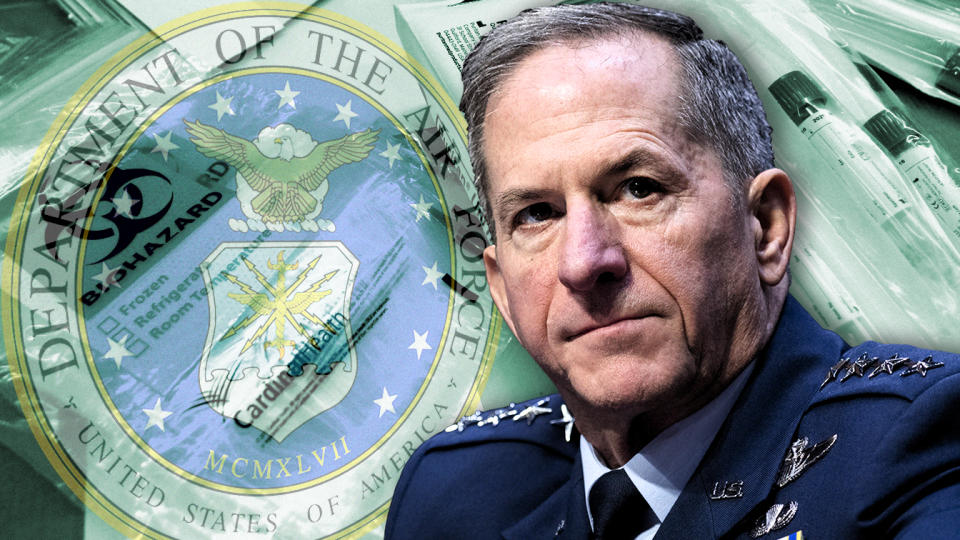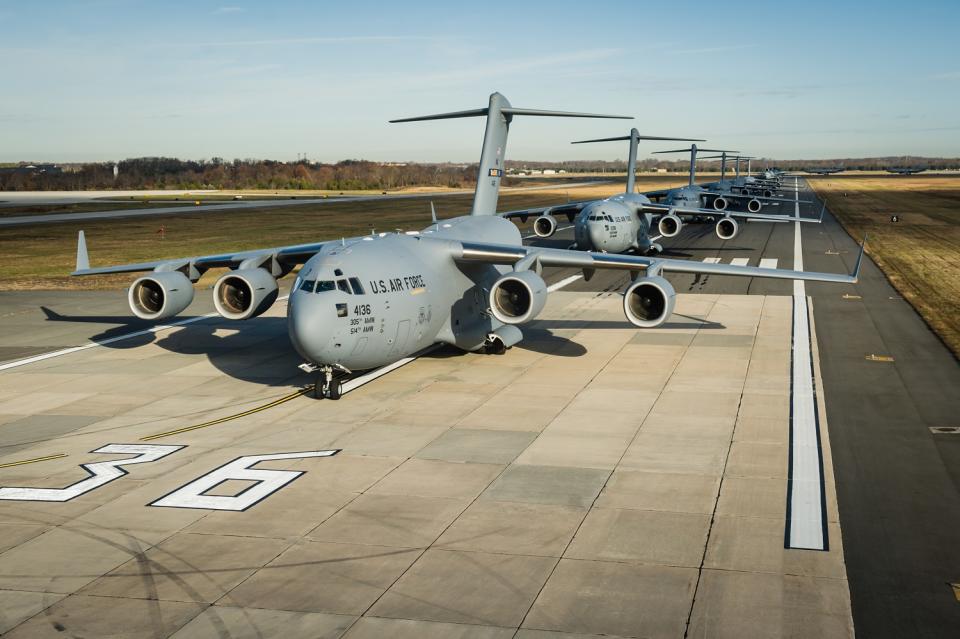Air Force lacks testing kits for nuclear crews, says chief
The Air Force’s top officer said Wednesday that his service does not yet have enough COVID-19 testing kits to test all of his highest priority personnel, including nuclear missile and bomber crews.
However, Air Force Chief of Staff Gen. David Goldfein told reporters that the service had been able to keep the nuclear crews and other high-priority forces free of COVID-19 by using social distancing and scrupulous cleaning regimens.
Along with remarks by Deputy Secretary of Defense David Norquist and Vice Chairman of the Joint Chiefs of Staff Air Force Gen. John Hyten, who briefed reporters later on Wednesday, Goldfein’s comments indicated that the military is preparing for a long fight against COVID-19, the disease caused by the coronavirus.
In particular, there appears to be a growing acknowledgement among senior military leaders that the virus will return on a seasonal basis. “We are all talking about it,” Goldfein said. “Until we have a vaccine, we’re going to be living with this virus, and the potential for it to come back in some cyclical way is likely,” he said, adding that “all the projections are no vaccine for upwards of a year.”
“It is the job of the military to prepare for worst-case scenarios,” Hyten said. “We will take the lessons learned from this outbreak [and] we will plan for something worse to happen in the fall,” while hoping that in the meantime vaccines or therapeutic drugs become available, he added.

Because of the nationwide shortage of test kits, Defense Secretary Mark Esper has directed each military service to divide its forces into four tiers, with tier one being the highest priority for tests when they become available, and tier four being the lowest priority, Goldfein and the other senior officials announced Wednesday. Goldfein listed the nuclear force, the Air National Guard crews who are on alert to defend the homeland, and the service’s airlift crews as among the Air Force’s highest priority forces. In addition, he said, airmen in the Space Force (a separate service under the Department of the Air Force) who maintain the military’s Global Positioning System satellites are also part of the top tier.
While acknowledging an “urgency” to expand testing, especially as he lacked the kits to test even his highest-priority forces, Goldfein said that national priorities such as nursing homes had to come first. “I would not want to take tests away from that top national priority for my younger and healthier force,” he said. Hyten later told reporters that the military would be able to test all its tier one forces by the end of this month.
In the absence of widespread testing, the Air Force has used aggressive social distancing to keep its nuclear crews and other tier one elements free of COVID-19, according to Goldfein.
Nuclear missile crews “used to go out there for three to four days,” he said. “Now we’re keeping them out there 14 days and longer.”
Social distancing in the nuclear world is complicated by the “two-person” rule for operating the weapons. Missileers, Air Force specialists responsible for operating nuclear missiles, work in two-person teams in underground capsules, cramped quarters where the two operators sit just feet away from each other.
Goldfein was keen to underscore the importance of the Air Force’s nuclear crews. “There is no situation where I see the nation or the leadership giving us relief on having a safe, secure and effective nuclear deterrent connecting the commander in chief with the forces in the field,” he said. “That’s a no-fail mission. We always have to get it done.”
The Air Force’s Air Mobility Command is similarly protecting its aircrews who fly materiel and personnel around the globe. “We essentially isolate the crew, keep them in a clean environment, make sure that the cockpit itself is clean, so they’re able to fly the mission,” Goldfein said. Once the crew has landed, “we keep them isolated, we keep them in a bubble” until their return home, he added.
Those crews are playing an essential role during the pandemic, according to Goldfein. “Air mobility is critical,” he said. “They’re becoming, along with our medical professionals, the MVPs of the COVID response.”

The Air Force is adapting to the pandemic in two stages, according to Goldfein. The first, which Goldfein called a “reset” to the “new normal,” began several weeks ago, when the service brainstormed how it could continue to conduct its key missions, even if infection rates in the service were between 15 percent and 20 percent, he said. To protect the Air Force’s ability to conduct these missions, the service has built separate teams and kept them isolated from each other and the rest of the force, according to Goldfein. Those procedures have worked so far, he said. No nuclear missile crew members, nuclear bomber crew members or air mobility air crew members have tested positive for COVID-19, he said.
Planning for the second stage began Tuesday, when Goldfein said that he held a two-hour video teleconference with his senior generals to discuss another reset, this time on June 1, to posture the Air Force for the “new abnormal,” which he defined as “living and operating with a cyclical virus until we get a vaccine.”
Part of that reset involves figuring out how to push as many recruits as possible through basic military training while continuing to follow the Centers for Disease Control and Prevention’s protocols for social distancing, according to Goldfein, who identified basic training as something the Air Force could not afford to give up, as doing so would have “a direct impact on readiness, not only today but in the future.”
The Air Force has “worked really hard” to figure out how to continue that training while adhering to CDC protocols, Goldfein said. It has cut the number of recruits going through basic training by about 50 percent and opened a small basic-training detachment at Keesler Air Force Base in Mississippi to take some of the load off Lackland Air Force Base, Texas, where all Air Force basic training usually occurs, he added.
Before recruits begin training, “we put them in 14 days of restricted movement, watch them for any symptoms,” he said. The system appears to be working, with only five of 6,000 basic trainees testing positive, according to Goldfein. The Air Force “quickly isolated” those five until they tested negative, at which point they were put back into training, he said.
Goldfein said it was an advantage that the Air Force’s population, and particularly its basic trainees, was “young and healthy, so not a high-risk population for the virus.”
_____
Click here for the latest coronavirus news and updates. According to experts, people over 60 and those who are immunocompromised continue to be the most at risk. If you have questions, please refer to the CDC’s and WHO’s resource guides.
Read more:



